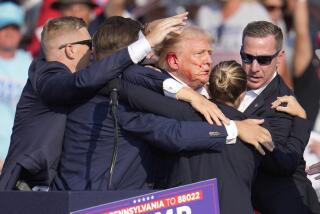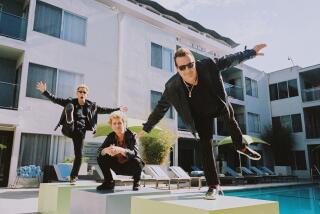White House Air Security in Confusion
WASHINGTON — The investigation into the plane crash on the White House grounds has revealed widespread confusion about the obligations of federal aviation officials to notify the Secret Service when an aircraft may be about to violate the security zone around the White House.
The day-old investigation into the fatal crash of unemployed Maryland trucker Frank Corder is now centering on whether the Federal Aviation Administration is under written orders to notify the security agency when an aircraft approaches the prohibited zone.
After a briefing by federal investigators, Sen. Dennis DeConcini, chairman of a Senate Appropriations subcommittee that oversees the Secret Service, said Tuesday that officials of the agency believed the FAA was under written orders to notify them. But other Administration and congressional officials insisted that it was still not clear what the Secret Service officials believed and whether such orders ever existed.
“That’s at the heart of the investigation,” a senior Administration official said.
The issue is further complicated by disclosures that FAA controllers at nearby National Airport apparently did not notice on their radar screens that Corder’s single-engine Cessna was about to glide onto the White House’s South Lawn.
The mix-up means that either Secret Service officials misunderstood the FAA’s role in enforcing the security zone--or that FAA controllers at nearby National Airport neglected their duty.
The single-engine Cessna that Corder was flying crashed at 1:49 a.m. Monday, skidding 50 feet before coming to rest at the wall below the Clintons’ bedroom. The Clintons, however, were staying at Blair House across Pennsylvania Avenue because of work on the White House air-conditioning system.
The Secret Service said medical examiners found that Corder’s blood-alcohol level was 0.045, over the legal limit of 0.04 for pilots. DeConcini said that preliminary tests also showed “traces” of illegal drugs in his body. He declined to specify the kind of drug.
The air security zone around the White House was last subjected to a major review in 1974, after an Army private from nearby Ft. Meade, Md., made an unauthorized landing in a military helicopter on the White House lawn. The soldier was shot, wounded and arrested.
Afterward, federal officials even installed telephone “drop lines” between the FAA and the Secret Service offices to make communications easier. But there are different opinions about whether a system was set up then requiring the FAA to notify the Secret Service of potential incursions.
The communications controversy was revealed when Transportation Secretary Federico Pena met with Federal Aviation Administrator David R. Hinson and Secret Service Director Eljay B. Bowron to begin a review of the incident and security precautions.
DeConcini predicted that an executive order or memo of understanding between the two agencies probably would be issued to settle the controversy.
“They’re going to correct that real quick, I think,” DeConcini said.
He said it was far from clear that the outcome of the incident would have been different, even if the FAA had notified the Secret Service immediately. The senator agreed with security experts who have noted the difficulty of stopping an aircraft headed into the zone.
Nevertheless, he said that notification by the FAA would have offered the Secret Service at least some additional moments to react. As it was, Secret Service agents in the White House had only a few seconds--just time enough to run for cover.
Congressional sources said that Secret Service agents continued to interview family and friends of Corder Tuesday. The interviews supported earlier tentative conclusions that Corder’s act was not aimed at hurting Clinton.
In briefings, federal investigators told members of Congress that the FAA officials at National Airport tower had searched taped records and found that the Cessna had been picked up on radar. But, although the tower is fully staffed at that hour, apparently no operator noticed the blips at the time.
“They did not see the aircraft on the radar screen,” said David Adams, a Secret Service spokesman. “After reviewing the tapes . . . they did see it on the image.”
One source said that the Cessna’s image may not have been noticeable to a controller, even though it showed up on the taped records.
Federal officials tried to defuse any suggestion that the FAA and Secret Service were feuding over the incident. A senior Treasury official predicted that there would be no Secret Service shake-up.
Clinton, himself, when asked Tuesday if he felt safe at the White House, smiled and replied: “Yes!”
More to Read
Sign up for Essential California
The most important California stories and recommendations in your inbox every morning.
You may occasionally receive promotional content from the Los Angeles Times.











